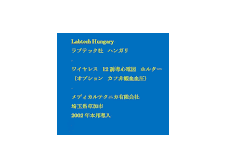2015年4月7日火曜日
米国で広がる遠隔医療
Regulatory action key to telemedicine boom
PwC: Licensing, reimbursement issues remain barriers to widespread adoption
April 1, 2015 | By Katie Dvorak
State and federal government movement on payments and policies surrounding telemedicine is helping lead to a boom in the use of such technology, but challenges remain to widespread adoption, according to a policy spotlight by PwC.
Almost two dozen states currently mandate private insurer reimbursement, and in more than 40 states Medicaid covers telehealth, the brief notes. For instance, New York, in January, became the 22nd state to pass legislation requiring that telehealth visits be reimbursed at the same rate as in-person visits.
The need for telemedicine to be embraced by the government will only grow as such technology becomes more popular with consumers, PwC points out. There is already increasing demand for the services, such as at Kaiser Permanente, where more than 50 percent of its visits are conducted virtually, according to PwC.
Webinar: Simplifying the Analysis of Operational and Clinical Data
DATE: TUESDAY, APRIL 28, 2 PM ET / 11 AM PT
This webinar will highlight how leading healthcare systems are leveraging their operational and clinical data to make systemic changes that positively impact their care delivery and operational efficiencies. Strategies highlighted will include solutions for managing and consolidating administrative, operational and clinical information into one comprehensive analysis. Register Now!
Sign up for our FREE newsletter for more news like this sent to your inbox!
In addition, telemedicine helps the healthcare industry not only by providing more convenient care for consumers, but also by lowering costs.
The average estimated cost of a telehealth visit saves about $100 or more compared to the estimated cost for in-person care, according to a study by Dale H. Yamamoto of Red Quill Consulting, Inc.
However, despite all the promises of telemedicine, barriers persist. One such challenge being tackled by some in the industry is licensing. Physicians must be licensed in the state where they practice and cannot practice across state lines without licenses from those states, according to PwC.
To combat this issue, in September, the Federation of State Medical Boards finalized a model for an interstate compact for physician licensure. The aim of the compact is to reduce barriers for physicians who are looking to obtain medical licenses in multiple states, and will help facilitate licensure portability and telemedicine.
Reimbursement also is a hurdle, PwC notes.
"Payment for a telehealth visit with a consumer's primary care physician is limited, and is a deterrent to fully exploiting the benefit. Insurers should look for ways to form telehealth agreements with physician networks," the spotlight says.
PwC adds that employers should be cognizant of all the benefits telemedicine can have for consumers, and should enhance awareness of those benefits.
Related Articles:
New York enacts telehealth parity law
Study: Telehealth can save $100 or more per visit
FSMB completes drafting process for interstate medical licensing compact
State licensure problems plague telemedicine




















